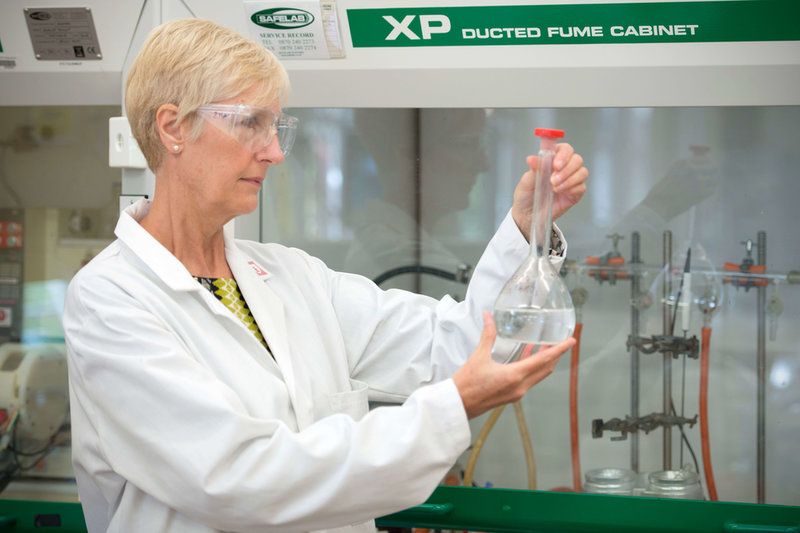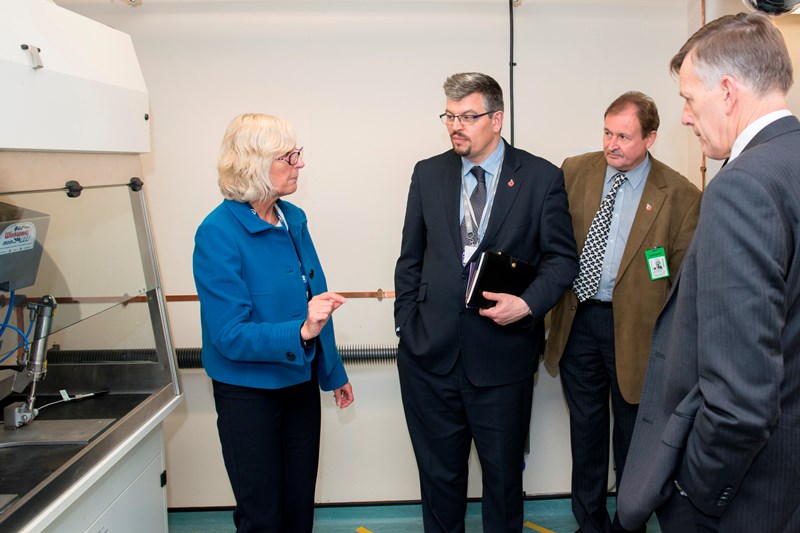special report
Plugging the UK Explosives Expertise Brain Drain
The UK boasts world-leading expertise in energetic materials research and development. But as established experts retire and funding is diverted into more glamorous areas of defence research, we risk losing it. Berenice Baker examines how initiatives led by Cranfield University’s Centre for Defence Chemistry are seeking to attract and retain the best know-how in the business.
The Defence Academy of the United Kingdom delivers higher education for members of the Armed Forces and government representatives. Visiting its campus in Shrivenham, southwest Oxfordshire, on a brisk winter’s day leaves no doubt of its military associations. Once admitted through a secure entrance, acres of low-lying buildings jostle behind high wire fences, and at least half the personnel walking between them wear camouflage.
What might be more surprising is that the site also hosts a branch of Cranfield University, 70 miles from its main campus. Cranfield Defence and Security (CDS) delivers defence and security education, research and consultancy, and a significant part of this is the Centre for Defence Chemistry (CDC), which has been working on propellants, explosives and pyrotechnic research for decades. CDC works on all aspects of defence manufacturing, vulnerability, combustion, and life assessment of energetic materials, or explosives as they’re more commonly known.
The lost art of hands-on training
But the types of expertise and training CDC provides are at risk due to a change in Ministry of Defence (MOD) career paths and a lack of awareness of career opportunities in the energetic materials field.
Professor Jackie Akhavan, head of the CDC and its director of education explains: “In the 70s, the MOD used to do everything in-house. In the 80s Maggie Thatcher started privatising a lot of things off. When you joined the MOD your whole life would have a career and you’d be trained.
“Nowadays, you join the MOD and you sit at a desk,” Akhavan continues. “You never go into a munitions facility, so we’ve lost that expertise. The people who were trained went to different factories and only took desk job once they became very competent are in their 60s and 70s and we’re losing them as they retire.”
“Another part of increasing our skills was giving young students coming in meaningful projects, and keeping them interested.”
Akhavan adds that younger people coming into the industry join the MOD only to sit at a desk job and learn safety and expertise, but have never gone into industry and had hands-on training.
“Why would young people go into explosives?” she says. “They go IT or media studies. Even if they did join us we couldn’t keep them. So another part of increasing our skills was giving young students coming in meaningful projects, and keeping them interested. This doesn’t just apply to early careers but also to people who change their careers.”

Professor Jackie Akhavan, head of the CDC and its director of education. Image: Jackie Akhavan/Cranfield University
The Centre for Excellence in Energetic Materials
The idea to tackle this challenge came with the launch in 2016 of the Abel Building, a £1.5m state-of-the-art facility to process novel explosives. Named after Sir Frederick Abel, who co-invented cordite with Sir James Dewar, it is housed in the Explosives Research Area and replaced an existing energetics processing facility.
It is constructed from steel-reinforced concrete walls, blast doors and a frangible panel in the roof. All the explosive processing work is carried out remotely from a control using CCTV. There is also a preparation room, a room for the 50 and 100 tonne presses, a mixer room for the mixer and a conducting room dedicated to pyrotechnics and other sensitive energetics. A process development room houses the latest processing technology and will be updated with any new technology that emerges in the next 20 years.
“The Centre for Excellence in Energetic Materials (CoEEM) was officially launched at the 2017 Cranfield Ordnance, Munitions and Explosives Symposium.”
“I thought this is probably the first new explosive facility for this country for a long, long time, so why don’t we, on the top of that, start setting up a centre of excellence for capability and people?” explains Akhavan.
The Cranfield team got the Atomic Weapons Establishment, Defence Science and Technology Laboratory, and the Defence Ordnance Safety Group, a subgroup of Defence Equipment and Support, on board to facilitate the project. The Centre for Excellence in Energetic Materials (CoEEM) was officially launched at the 2017 Cranfield Ordnance, Munitions and Explosives Symposium.

The Abel Building ribbon cutting ceremony with Sir Peter Gregson, with Professor Simon Jones, and Professor Jackie Akhavan. Image: Cranfield University
Capability and collaboration: A co-ordinated knowledge exchange
To run CoEEM, Akhavan approached Purnima Patani, a teaching fellow at CDC, to be programme director. She has a background as a development scientist in the pharmaceutical industry and progressed from field sales, marketing, project management, and operations director to senior director and general manager predominantly in the life sciences domain.
Once she was given the green light to spend time on CoEEM, Patani examined its raison d’être.
“There were lots of organisations that dealt in certain aspects of munitions, explosives and energetic material in general, but there was no central point, a resource to say, OK I know I need to start here,” she says.
“While they might end up somewhere else, CoEEM acts as a funnelling system to direct them in the right direction. The idea was to be that glue that brings all those elements together.”
One of the needs they identified was for training to provide a good capability, known as Suitably Qualified and Experienced Person. Each of the organisations involved were worried that they had lots of existing depth of experience and competencies, but there were no distinct career paths, such as weapons development or forensics career paths. CoEEM wants its courses to make the process seamless.
It will do this by collaborating with UK-wide organisations and academic centres to deliver coordinated research, training, test and evaluation services and act as a forum for knowledge exchange. It will also provide technical leadership, guidance and advice on programme formulation, direction, content and investment decisions with support and engagement from the wider energetics materials community.
This national capability centres on a virtual online organisation hosted by Cranfield University. Through this they aim to establishing a critical mass of expertise, with CoEEM providing the next generation of experts in the UK energetics field.

Professor Jackie Akhavan tours the new facility with Hugh Bellars and Colin Danson from the Atomic Weapons Establishment. Image: Cranfield University
Energetics up-skilling: Building maps of capabilities, expertise and facilities
The next steps for CoEEM include building maps of capabilities, expertise and facilities. This will be via a dedicated CoEEM website that will also host a knowledge store that provides access to journals, books, webinars and other information. CoEEM will use this to help gather information about where the current and future experts are likely to come from across the UK and assist in training them.
While CoEEM is making significant strides in preserving and developing the UK knowledge base in energetics, Akhavan has some strong messages for government on how to ensure we don’t lose the essential skills.
“In short, invest more money,” she says. “Funnel MOD spend into energetics up-skilling or we won’t have an intelligent customer. Look at the facilities when buying explosives. These are the only ways we can ensure we won’t lose UK expertise and facilities.”